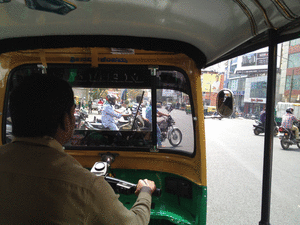Okay, I’m sorry. I’ll refrain from using any more puns for the rest of this post (but I can’t guarantee that they won’t return later in the blog). Anyways, last Saturday, my 5 Belgian housemates and I went on a trip to Goa, which has a reputation for being the Cancun of India. It’s the smallest state in the country, and an hour’s flight away from Bangalore. The biggest city in Goa is called Vasco da Gama, which is a reflection of Portuguese influence stemming from their conquest of the area in the 16th century.
We stayed in Goa for five days, after which I returned to Bangalore, and my housemates continued on their journey up to the northern states of India.
I’d only been working in Bangalore for two months so I didn’t feel like deserved this break per say, but something from that silly movie Eat Pray Love resonated with me. The main character is in an Italian barbershop, when a man getting a haircut declares:
Americans. You work too hard, you get burned out. You come home and spend the whole weekend in your pajamas in front of the T.V. But you don’t know pleasure. You have to be told you’ve earned it. You see a commercial that says: “It’s Miller Time!” And you say, “That’s right, now I’m going to buy a six pack.” And then drink the whole thing and wake up the next morning and feel terrible. But an Italian doesn’t need to be told. He walks by a sign that says: “You deserve a break today.” And he says, “Yes, I know.”
So Goa was my “Yes, I know.”
Once we arrived, the six of us got one of those big, boxy Mahindra cars which took us and our luggage to Agonda in southern Goa. Southern Goa is quiet, peaceful, and boasts an abundance of beautiful beaches. Driving there, it was strange seeing Portuguese town names on highway signs along with Catholic churches around every corner. But Goa has a rich history dating back to 20,000-30,000 BCE, and even appears in the Mahabharata, an epic poem from Ancient India written in Sanskrit, whose length is about ten times the Iliad and the Odyssey combined. That’s some crazy shit.
We stayed in sea-front huts for our three nights in Agonda. We sunbathed, swam, explored the community on scooters, and were able to celebrate the Holi Festival there. Holi happens on the last full moon day of the lunar month of Phalguna (Feb/March). It’s a celebration of the arrival of spring and a new year, and because of this, it’s also a time to mend broken relationships. It’s also just super fun and joyful.
On Tuesday, we journeyed two-and-a-half hours in the Mahindra to Vagator in northern Goa. Northern Goa is synonymous with party Goa, but we came at the end of the season, so things were pretty much winding down. The lifestyle in northern Goa is distinctly hippie compared to southern Goa. I always wonder though, what is it about beaches and hippie culture? I encountered something similar in a place called Punta del Diablo in Uruguay, an end-of-the-line kind of beach town. Maybe it’s just me, but there’s something escapist about all of it.
In northern Goa, the conversation naturally tended towards drugs, even when I did nothing to direct its course in that particular direction. The two Canadian girls I met at the hostel had dropped acid that day, the 18-year-old from Pune was always “still stoned, man” (he continuously lit huge joints in the front patio of the hostel while the security guard just chilled), the two Nigerian men who showed us the way to Curlie’s were dealers, and a third-year medical student who had driven to Goa all the way from Kerala by himself told me that he had arrived with only his “best friend, Marijuana.”
Dude, I didn’t even ask.
We also made it to the Wednesday Flea Market in Anjuna, which was a maze of stalls, whose wares began to repeat after a while. Jewelry, pashmina shawls, “Ali Baba” pants, printed bags, hammocks, chai, jewelry, pashmina shawls, “Ali Baba” pants…
The vendors had an interesting notion on how to best draw in customers. They were constantly hawking: “Come, madam, look at my shop!” “Madam, why you in a hurry?” “Hallo madam, where are you going?” As if trying to make people for guilty for not looking into their stalls was the way to go.
By Thursday, I was pretty content with heading back to Bangalore. I love the seaside, but I was feeling antsy to get back to the city and do things again. Other than a military exercise, which delayed my flight for an hour, I was back safe and sound in my apartment by that evening.













